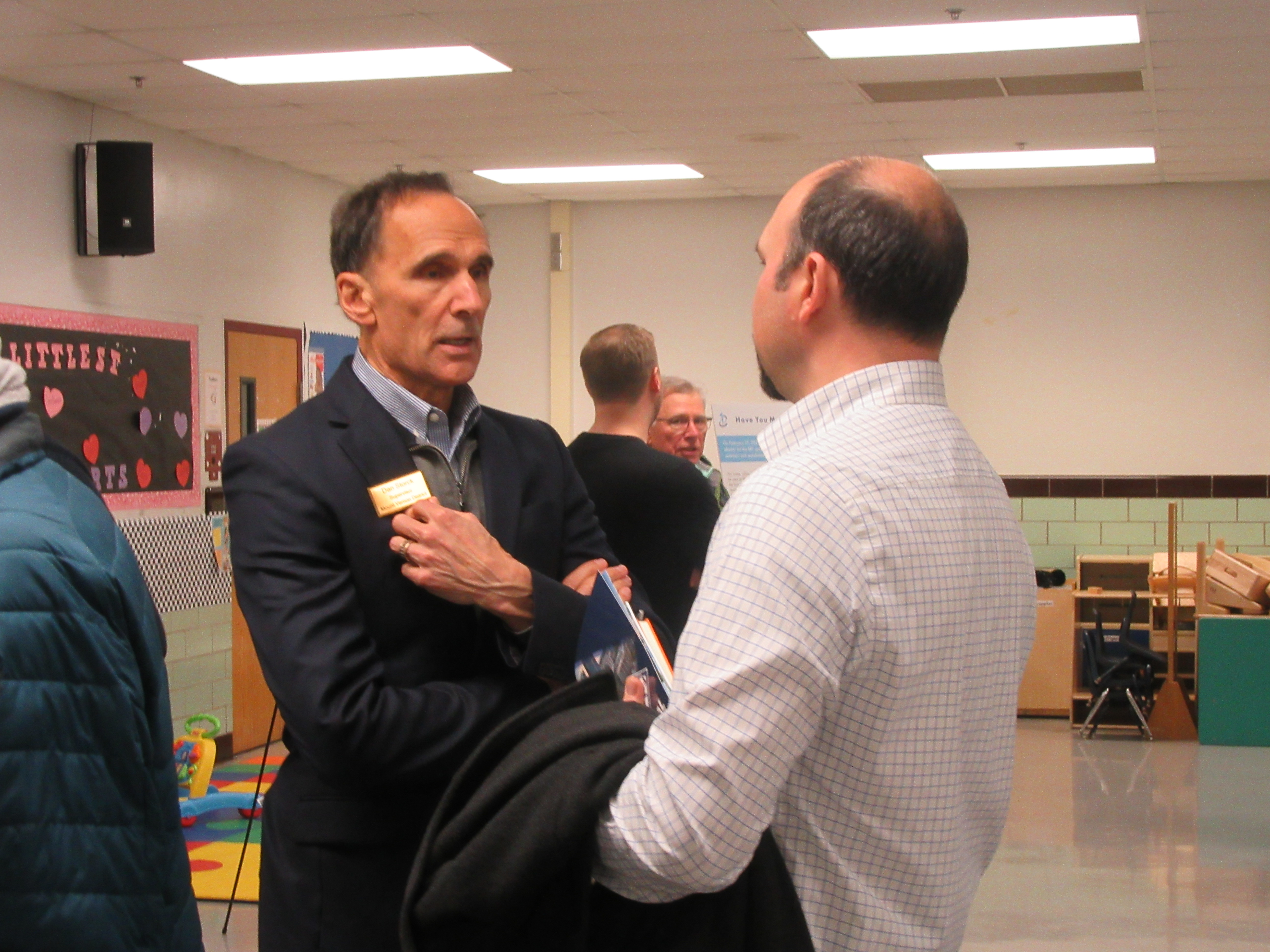Wednesday, February 7, 2024
U.S. 1 in southeastern Fairfax County, largely a hodge-podge of strip malls, fast food joints and gas stations today, will be transformed, according to the county’s redevelopment plan called “EMBARK Richmond Highway” and a new bus rapid transit system is key. Planners envision a 7.5-mile section as an urbanized “Main Street,” a series of gleaming high-rise condominiums, apartments and commercial buildings centered around six mixed-use business centers.
To some, it’s a forward-looking smart growth step toward mixed-use, 21st century living. To others, it’s “Ballstonization,” a pejorative jab at Arlington’s hip high-rise corridor. To others, it’s a plan to displace low- and middle-income people and the corridor’s small businesses.
On Jan. 31, Fairfax County officials held an open house at Bryant High School to update the community on the proposed bus rapid transit system (BRT), a central feature of the redevelopment. County documents describe BRT as “a high-quality, public transportation system designed to be fast, reliable and more convenient than traditional bus routes. It operates much like rail service, with a dedicated transitway, but uses bus vehicles.” County branders have dubbed it “The One,” because buses will run up and down U.S. 1.

Mount Vernon Supervisor Dan Storck answered questions.
Franconia Supervisor Rodney Lusk said, “I was glad to see so many residents join us at the open house to learn more about the BRT project. ‘The One’ is going to be transformational for the Richmond Highway corridor. The BRT is a key piece to the long-term plans for the corridor set out by the EMBARK Richmond Highway plan. The BRT and EMBARK plan aim to address traffic congestion, provide excellent public transit, jumpstart economic interest, reduce housing costs and improve safety.”
Supervisor Dan Storck said he too was “thrilled to see well over 100 residents and impacted property owners turn out to hear more about the reconstruction and widening of the highway to bring modern transportation options, including pedestrian sidewalks, a cycleway, traffic lanes and a dedicated transitway. This project is driving the revitalization of the highway, supporting 21st century urbanization and providing a variety of faster transit opportunities for residents to get to jobs, education, shopping, entertainment and more.”
EMBARK’s Redevelopment Plan
A 2015 study recommended a BRT system for the short term and eventually a three-mile extension of the Metrorail Yellow Line to Hybla Valley, concluding that existing transit service is insufficient for both current and future residents, citing long travel times, infrequent service and delays at traffic signals and during rush hour congestion.
The EMBARK project has three elements: road widening, including bicycle/pedestrian improvements; land use changes; and BRT. The land use changes identify six potential mixed-use, pedestrian-friendly, “community-business centers”: North Gateway, Penn Daw, Beacon/Groveton, Hybla Valley/Gum Springs, South County Center and Woodlawn.
At the Wednesday meeting, people studied conceptual drawings stretching 12 feet or so across two tables and on posters around the room as staff answered questions. From North Kings Highway to Sherwood Hall Lane, 80 percent of the design is completed, with the remaining segment, Sherwood Hall Lane to Belvoir Road, expected this spring.
Plans call for building nine bus stations of the same design featuring art developed by local students. A “Community Charm” initiative has chosen student art for windscreen designs for four of the nine stations.
“The BRT system will bring Richmond Highway into the 21st century by improving the look and feel of the corridor,” said Holly Hicks Dougherty, President, Mount Vernon Springfield Chamber of Commerce. “This new system will make a dramatic visual difference while improving connections to job centers, retail and historic destinations.”
Some Displacement
Widening the highway will require the acquisition of up to 21 residential parcels, one community parcel and up to 40 business properties between Sherwood Hall Lane and Huntington Metro station, a process already underway. The county’s Department of Transportation will conduct the right-of-way process until 2026. This includes appraisal valuation, negotiation, relocation and demolition. The county’s website outlines possible relocation assistance for displaced owners or tenants.
Some locals expressed concerns. Mary Paden, Chair, South County Task Force, anticipates several possible adverse impacts to low- and middle-income people. The Task Force, founded in 1975, is an advocacy group of organizations and individuals focused on housing, health and equity in the Route 1 corridor.
Since EMBARK encourages land consolidation and high-density residential development, many small businesses could be uprooted, she predicts. “There is no space in this plan for the return of the small, often ethnic, shops that many people enjoy,” she offers.
Today, pedestrians cross U.S. 1 between the intersections, creating one of the most dangerous streets in the county. Five intersections are almost a half mile or 2,640 feet apart. “Smart growth” urban planning guidelines recommend about 500 feet between crosswalks, Paden notes, so at least three more crosswalks are needed. Those distances and a road so wide that it will take two lights to cross, will likely put pedestrians at risk, she believes.
Paden believes that the proposed Penn Daw BRT station “threatens about 90 families in mobile homes. If that land is developed, there is currently no provision in state, federal or county law to compensate these families for the loss of their homes, many of which cannot be moved,” she maintains.
Her group is working with officials to address these concerns and asks that “everyone be at the table.”
Cost
The county’s preliminary cost estimate for the BRT project is approximately $730 million. VDOT’s estimate to widen Richmond Highway from Route 235 to Napper Road for the BRT lanes is another $372 million. On Dec. 5, 2023, the Board of Supervisors voted to accept just over $22.5 million in Federal Transit Administration grants to purchase rights of way. The Northern Virginia Transportation Authority will provide $5.6 million in local dollars.
The county anticipates road construction from 2025 to 2030, to widen the road from four to six lanes.
Information: https://www.fairfaxcounty.gov/transportation/richmond-hwy-brt/background; https://www.fairfaxcounty.gov/results?q=Embark